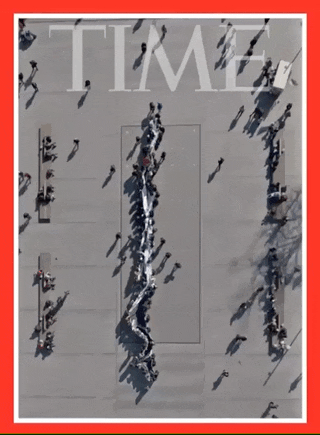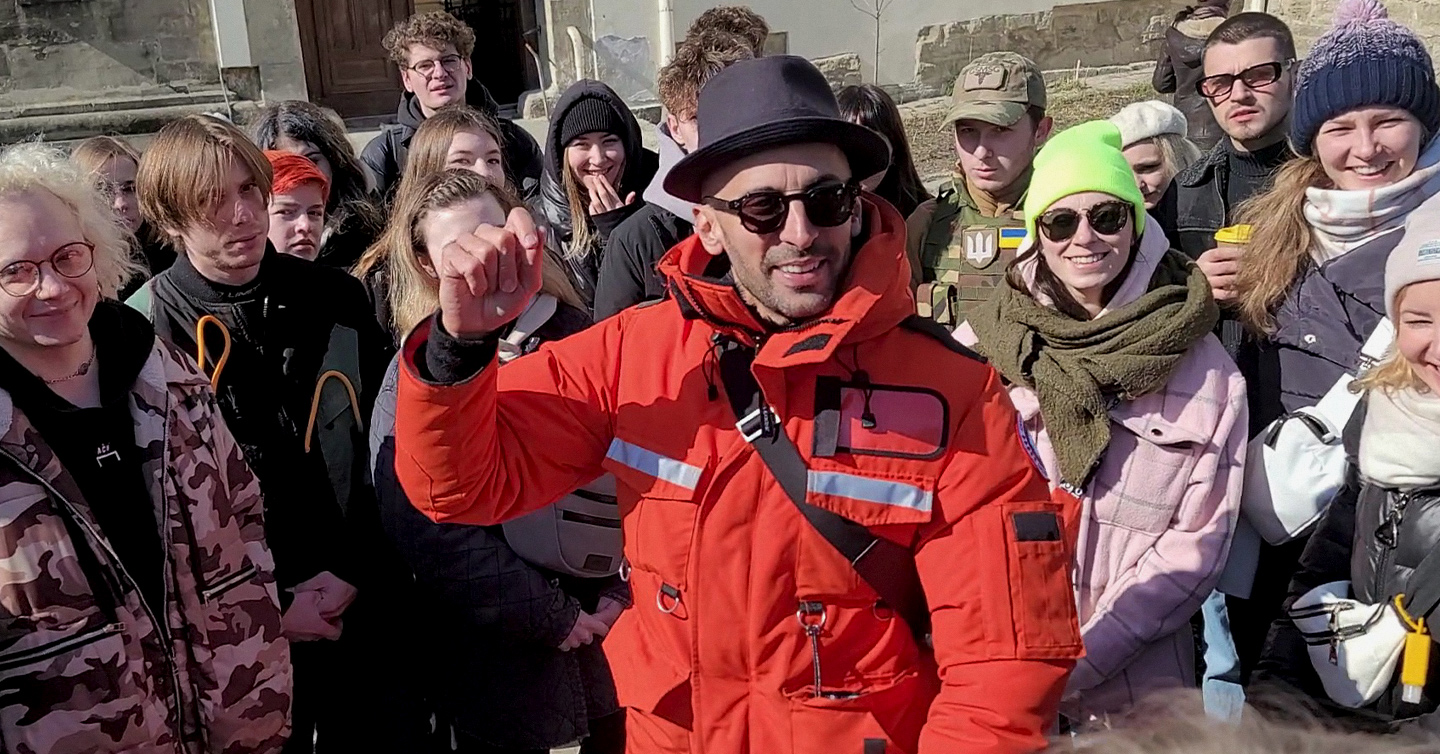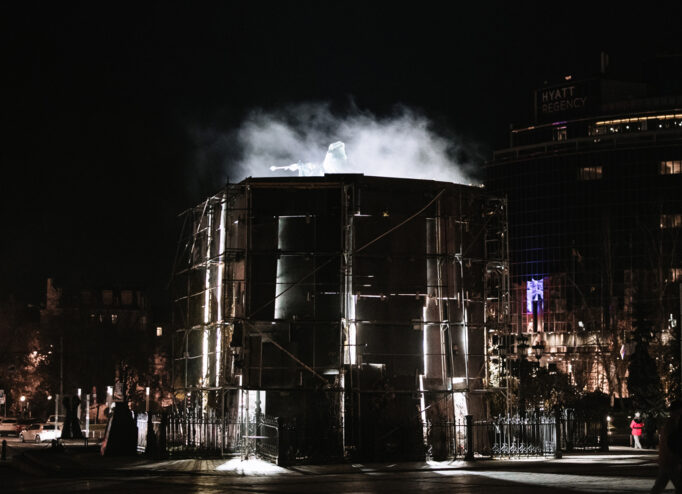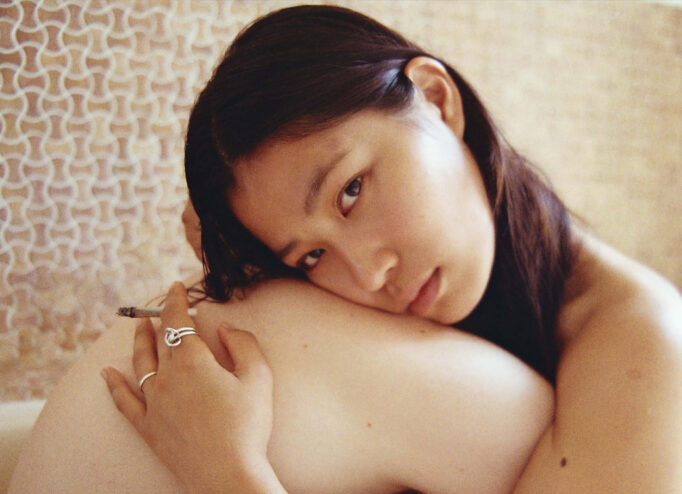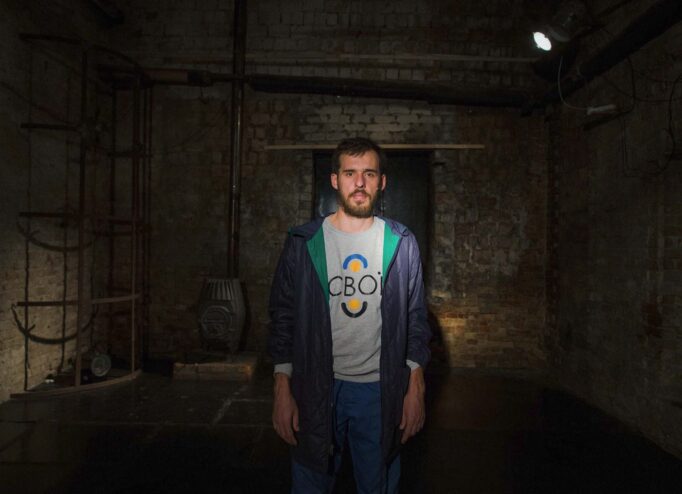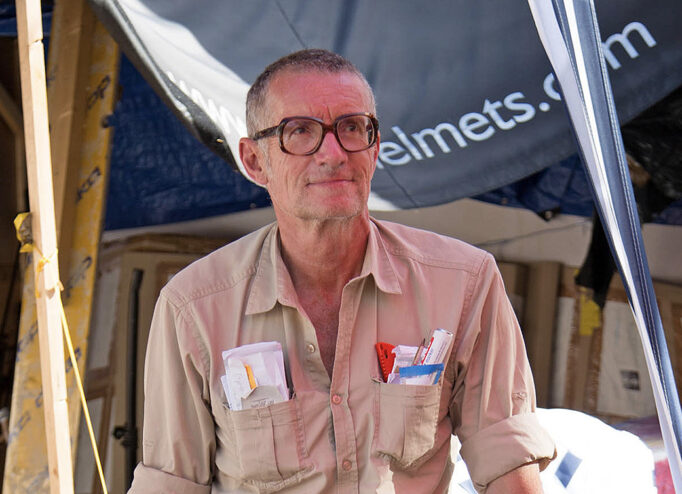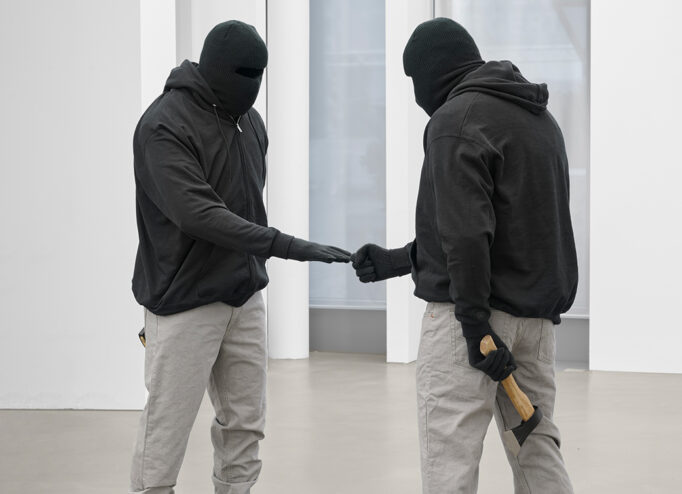One of the covers of TIME magazine features a photo of the Ukrainian girl held by dozens of people in the center of Lviv. This is a new project by JR, a French artist, photographer and filmmaker, covering the topic of refugees and telling the stories of ordinary people in «hotspots». On March 14, he personally came to Ukraine to bring his idea to life. DTF Magazine talked to the artist and explains how the project was realized


One of the two covers of TIME magazine features a five-year-old Ukrainian girl, Valeriia, whose photo is held by about 100 people on Freedom Avenue in Lviv. She was forced to flee Ukraine with her mother in the early days of russia’s full-scale invasion. This work by JR will also be presented as NFT, and the proceeds from sales will go directly from his team for the needs of internally displaced people from Ukraine.
Despite the fact that JR came to Lviv secretly and without public announcements, they were already prepared for his arrival. The initiative for the project belongs to musician Yuri Khustochka and artist Volodymyr Manzhos, who both wrote proposals to JR without knowing that they were doing it at the same time.
The musician and former guitarist of Okean Elzy approached French figures to ask for their opinion on the theme of the war for his project. He didn’t know JR personally, so he wrote to JR’s manager Mark: «He told me that they would rather do something themselves. I asked if I could be useful to them, and that’s how it started».
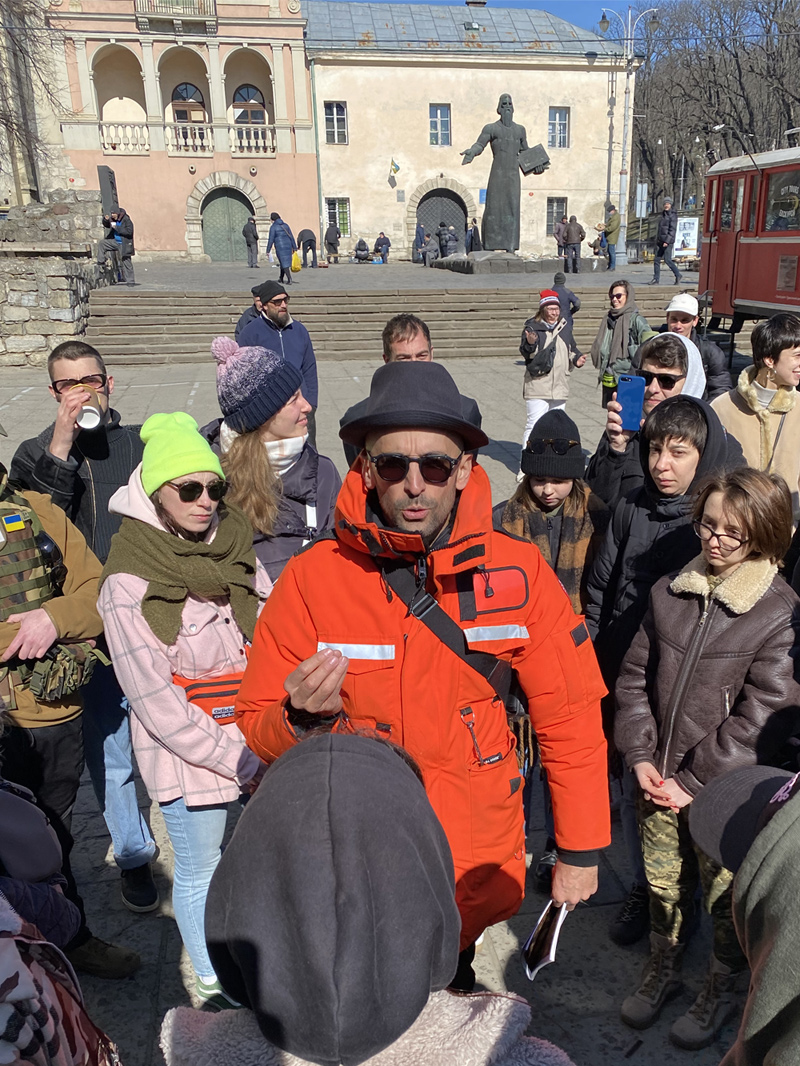

Volodymyr Manzhos also wanted JR to speak out about the war: «I wrote to him and asked if he had seen what was happening in Ukraine, what he thought about it and if he was going to express his position, because this is very important for us right now».
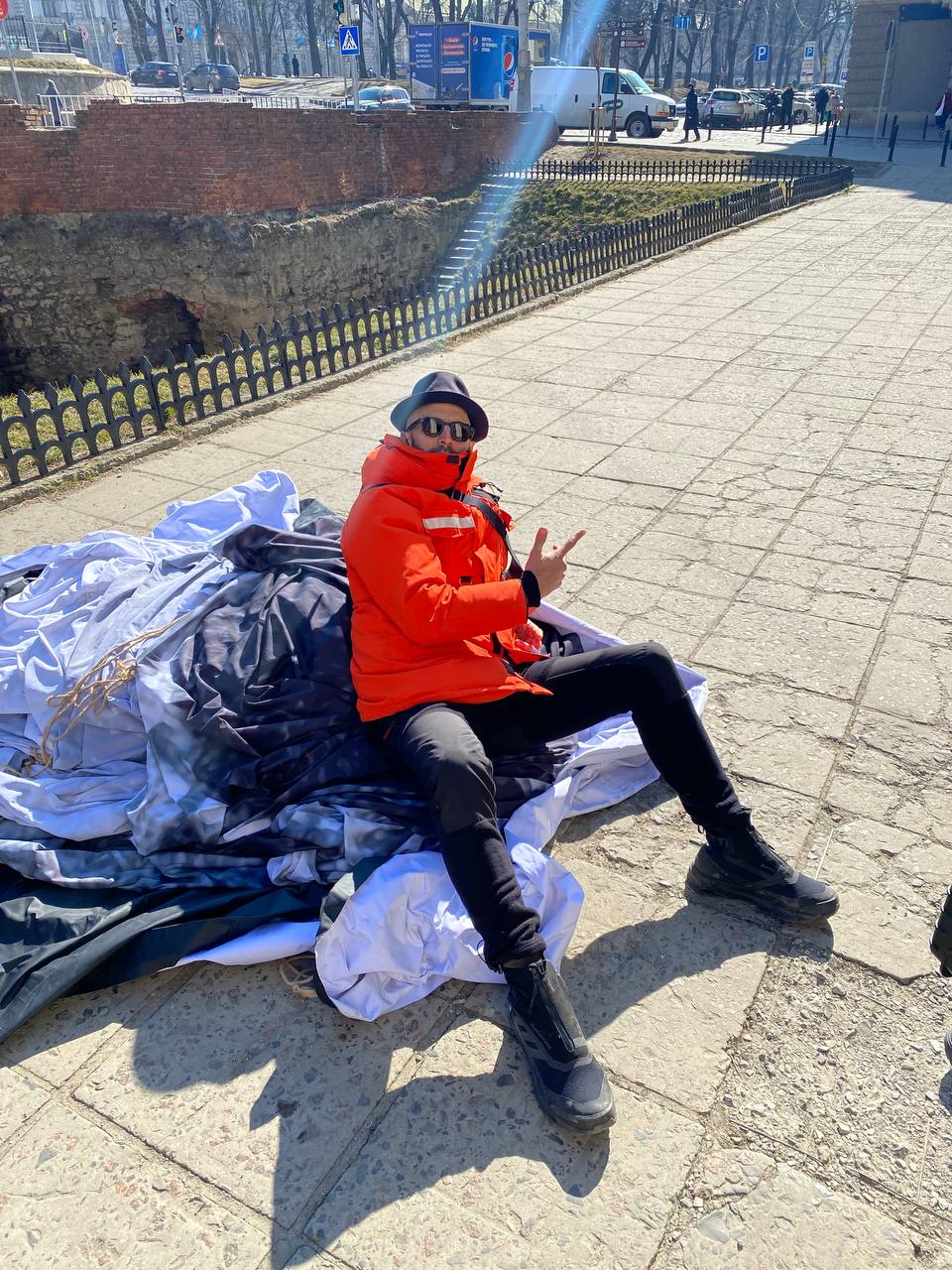

The project was intended to draw attention at the highest cultural level and help the Ukrainian people both in image and financially:
«JR is one of the most influential artists in the world, — Volodymyr Manzhos adds. — His position expressed publicly is a powerful mouthpiece that can reach many indifferent people».
One of JR’s key themes is the problem of refugees, and among the most famous works is an installation on the U.S.-Mexico border in 2017: a little boy looks with interest over the fence, observing the U.S. territory. And a month later, the artist installed a photo of the eyes of an illegal migrant – one part of the work was on one side of the border, while the other was on the another.
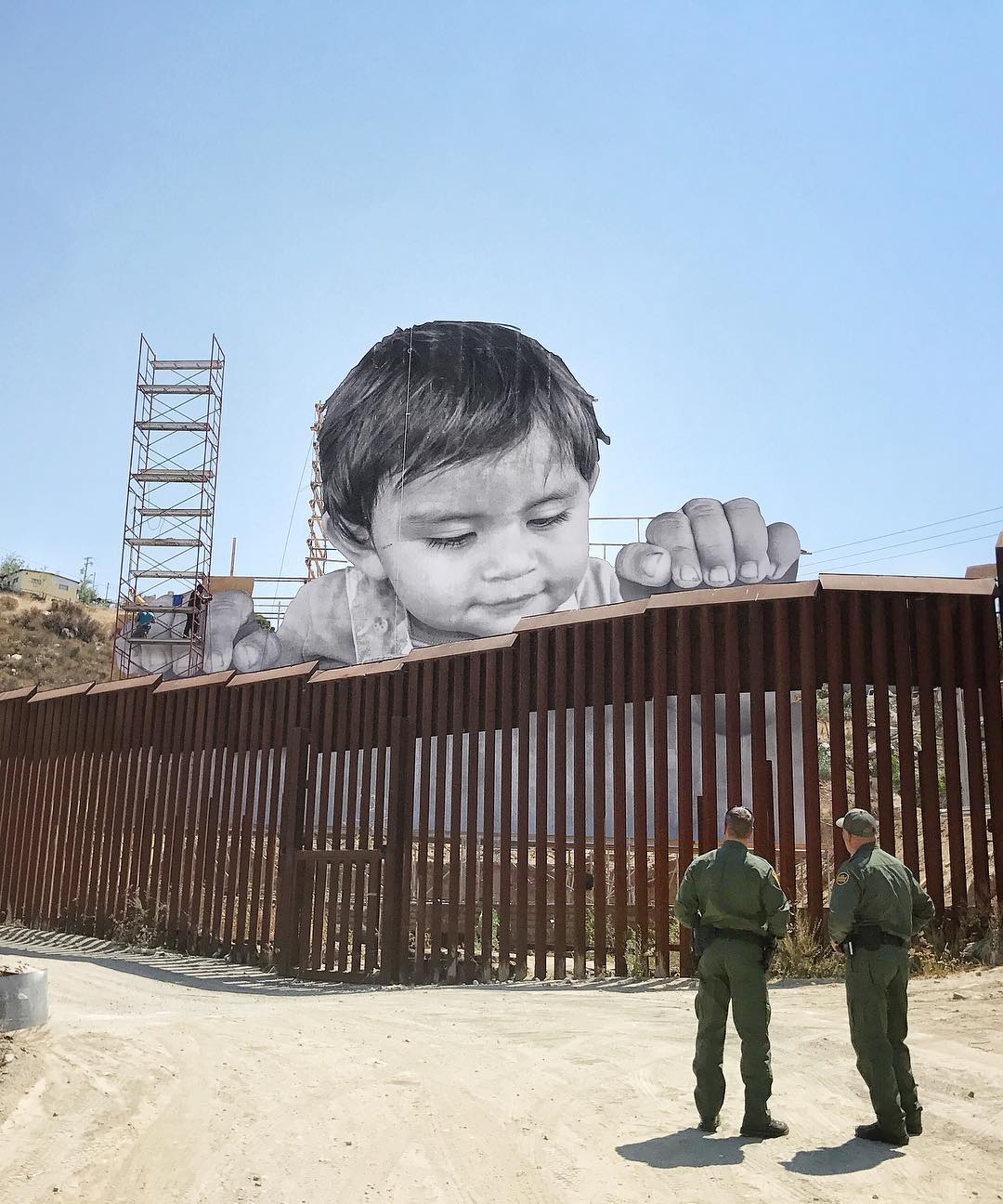

For the project in Ukraine, Yuri Khustochka suggested JR photographer Artem Iurchenko, who had been on the border with Poland since the first days of the war.
«I agreed and within five minutes I was already on the phone with JR, — Iurchenko says. — He explained the idea to me — I need a photograph of a girl who was playing, dancing, jumping and smiling. I really liked that. I immediately made it clear that I didn’t want to make children and refugees image unhappy. On the contrary, I wanted to show the thirst for victory, the positive energy that we really have. We agreed on this, and I’ve already took a photo on March 3».
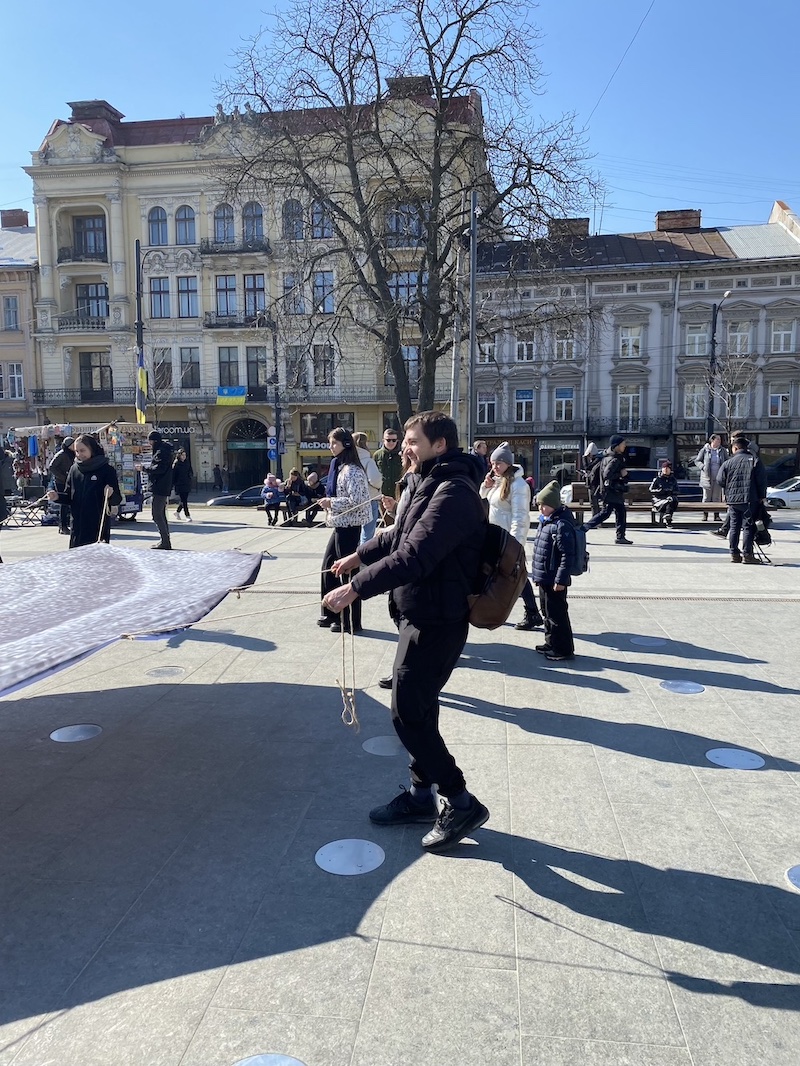
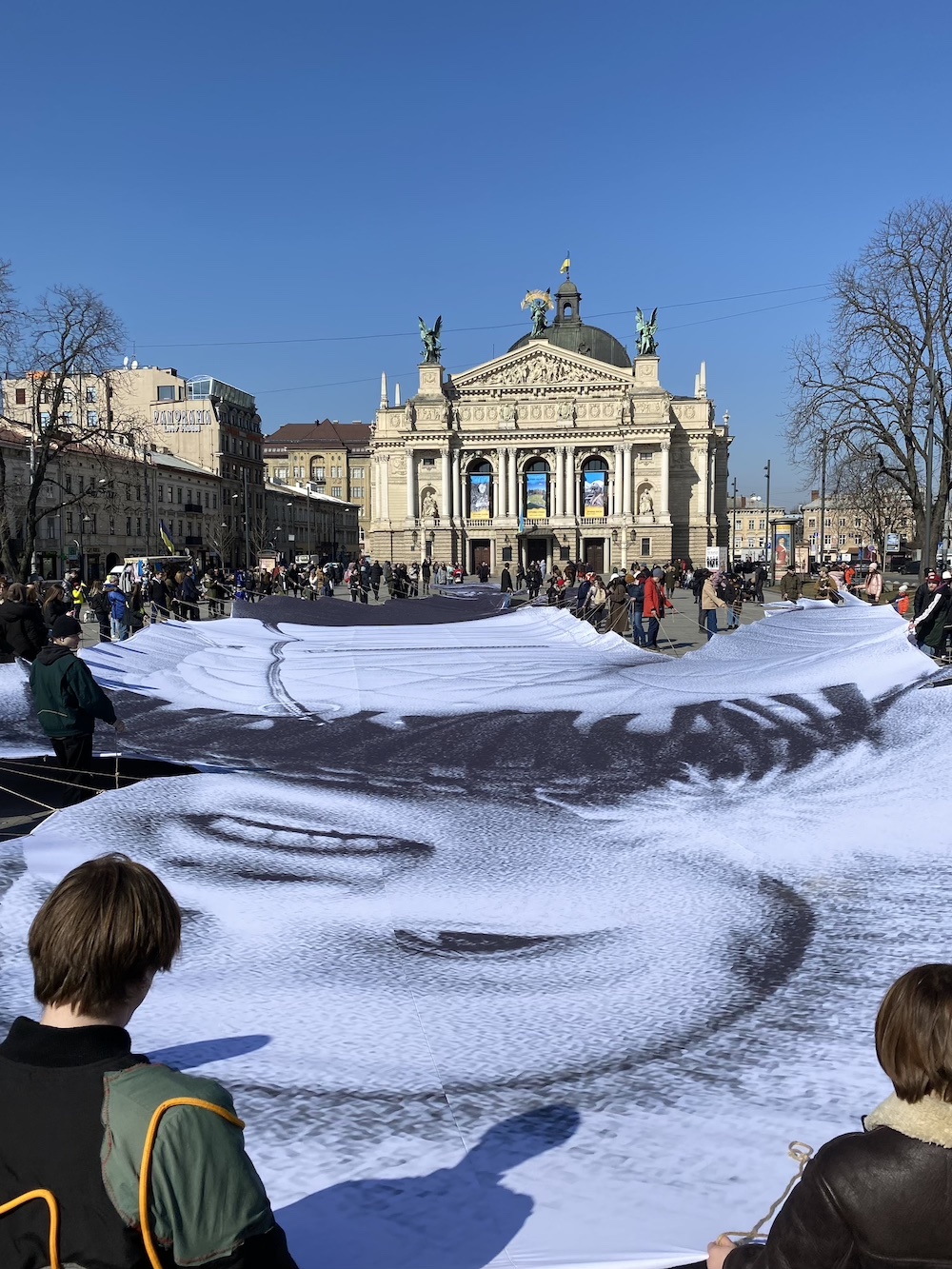
The heroine of the photo is a five-year-old Valeriia from Kryvyi Rih, who’s forced to flee with her mother from Ukraine to Warsaw, although her father and brother stay in Ukraine. Iurchenko photographed the girl in line to see doctors on the border with Poland. And it is her image on a 45×21 meter canvas held by about 100 people on Freedom Avenue near the Opera Theatre.
JR personally supervised the shooting process, looked for the right angle for the drone used to take the photo, and managed to find time to communicate with the participants of the project in Lviv. In addition, JR took pictures on his phone of everyone who was holding the print and published them on Instagram-stories.



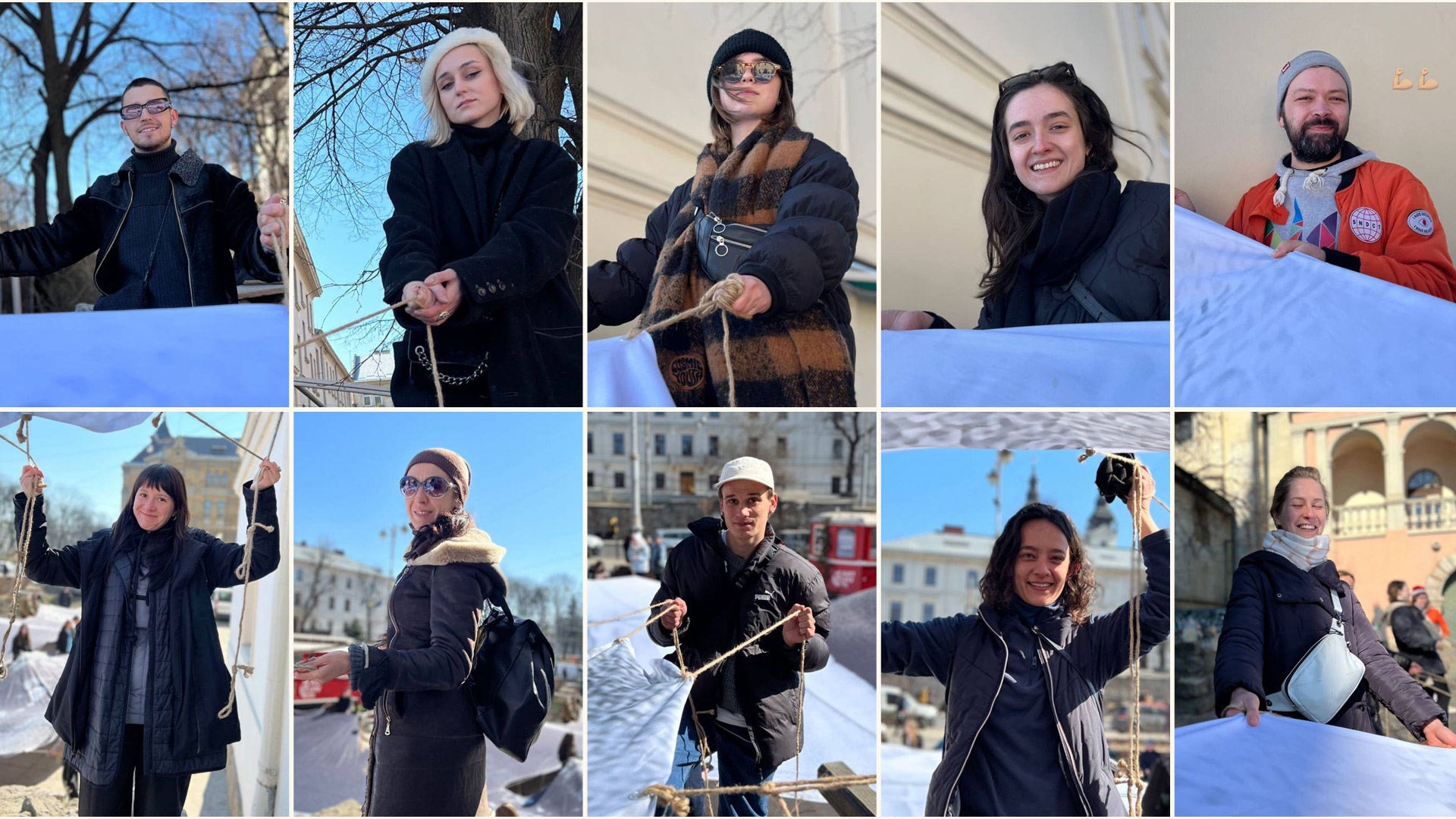
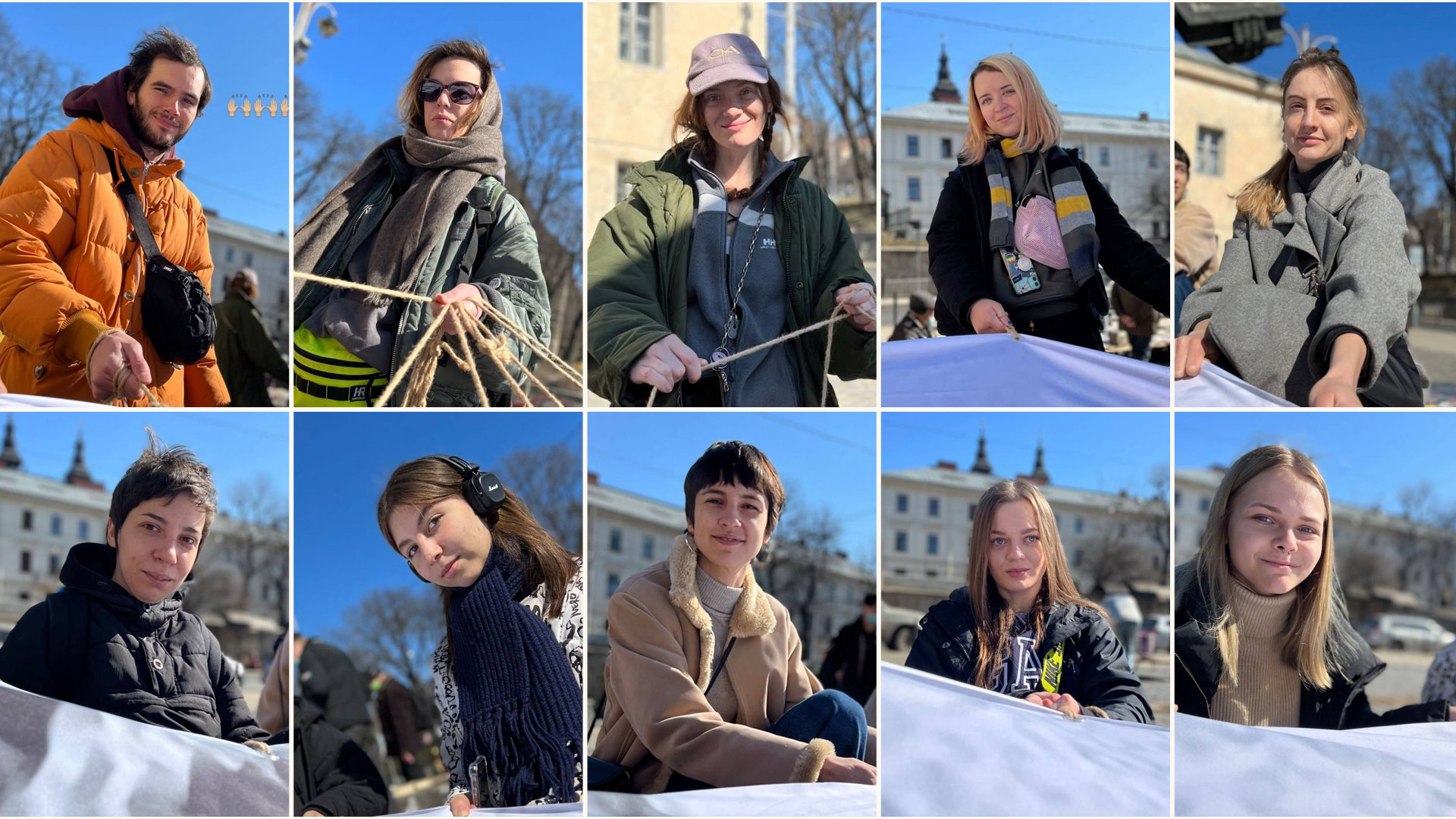

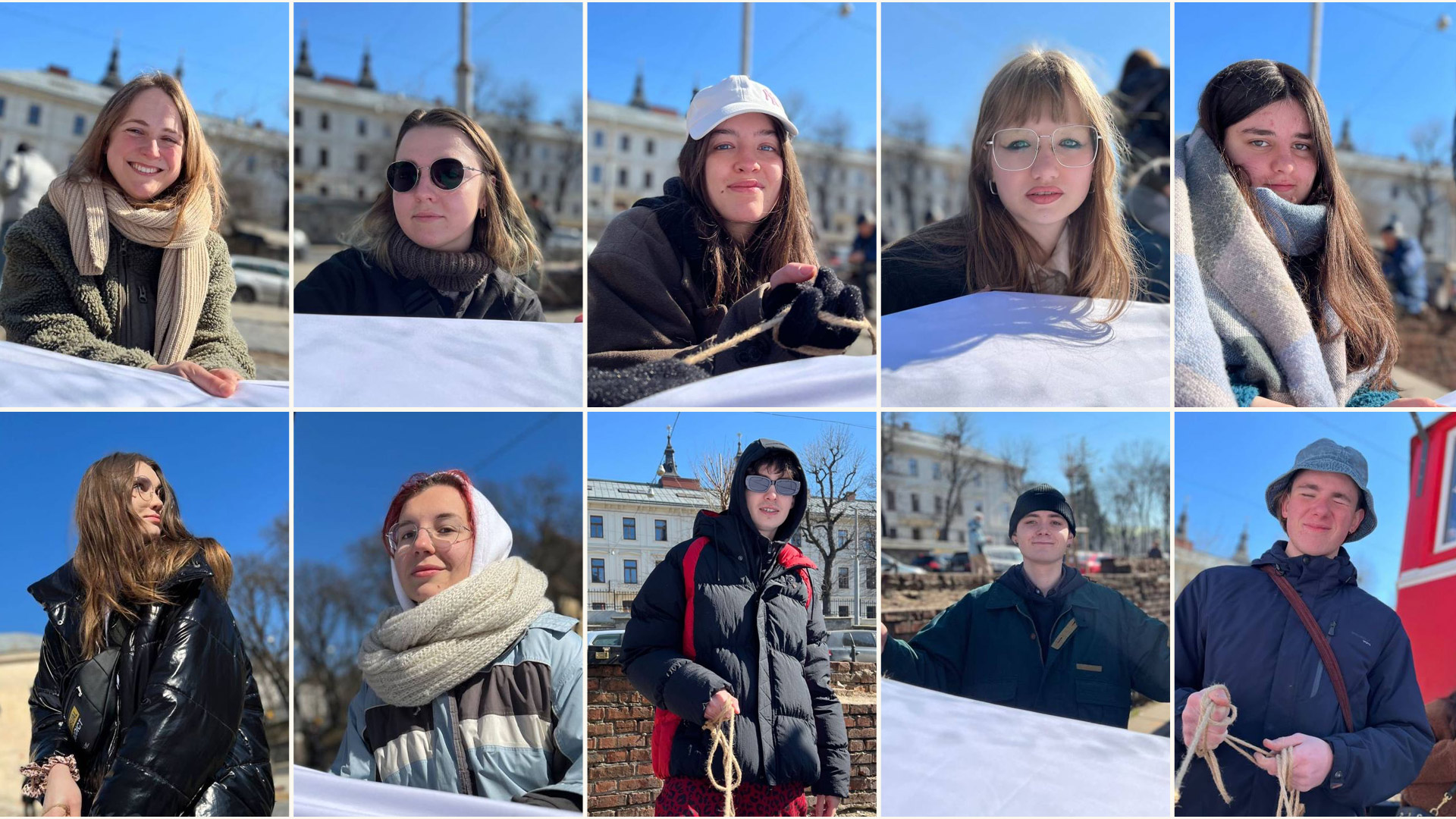
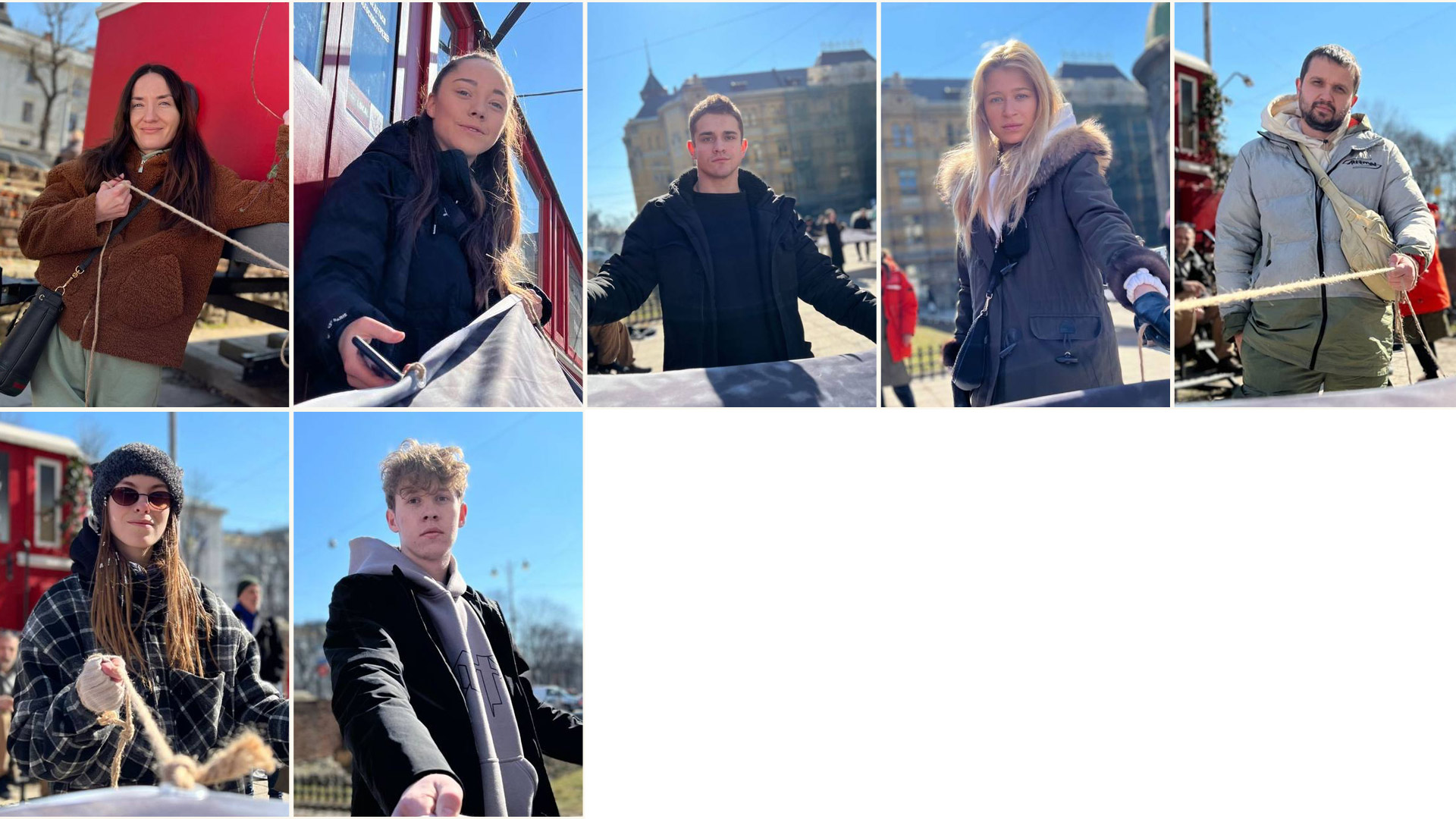
Along with the photo, JR also posted his observations from the border and Lviv. He called Valeriia via FaceTime after the project was filmed:
«Your smile was visible even from the sky, so big was the picture. You remind all the people who fly over Ukraine that there are people like you and we need to protect you».
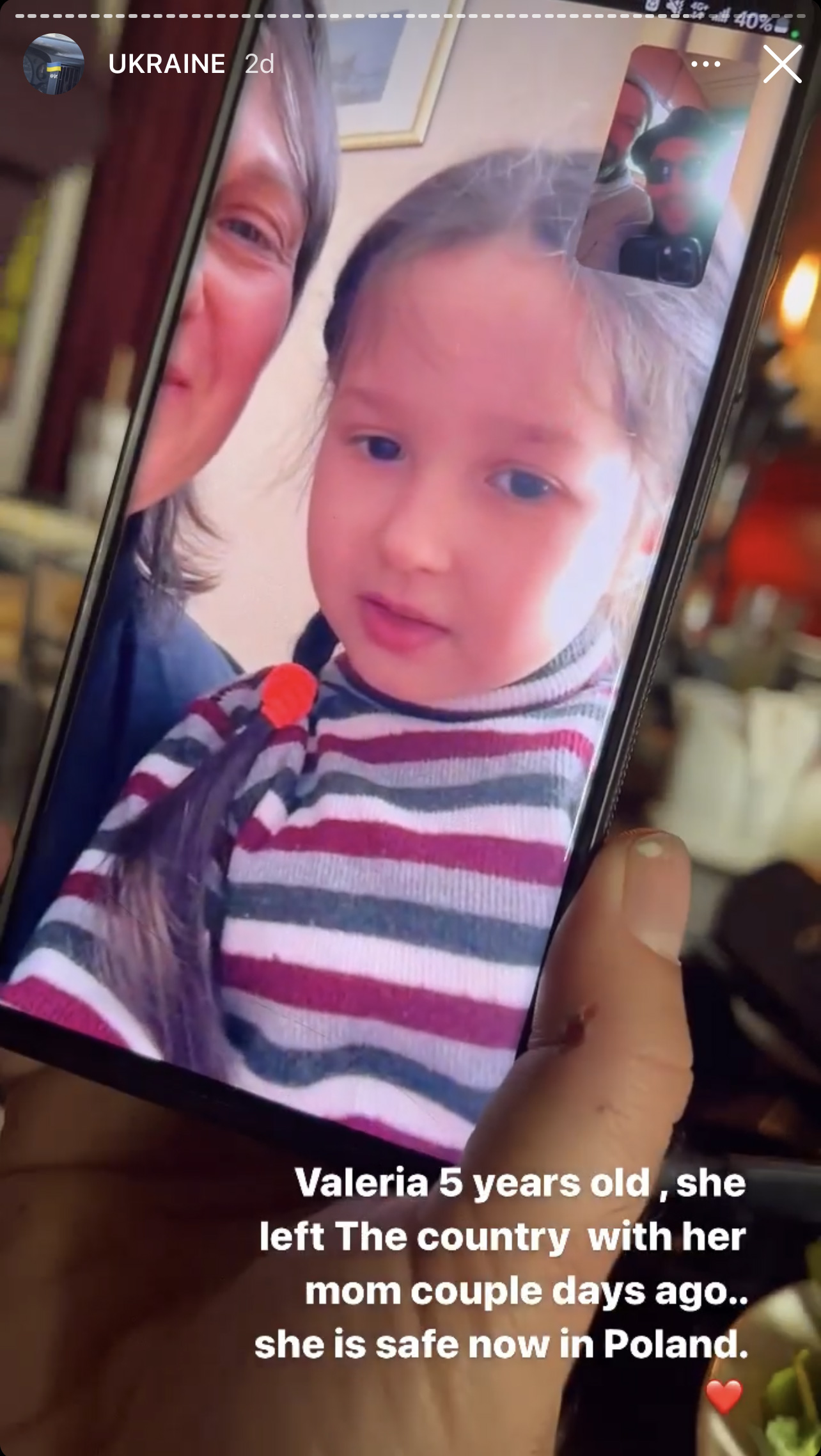
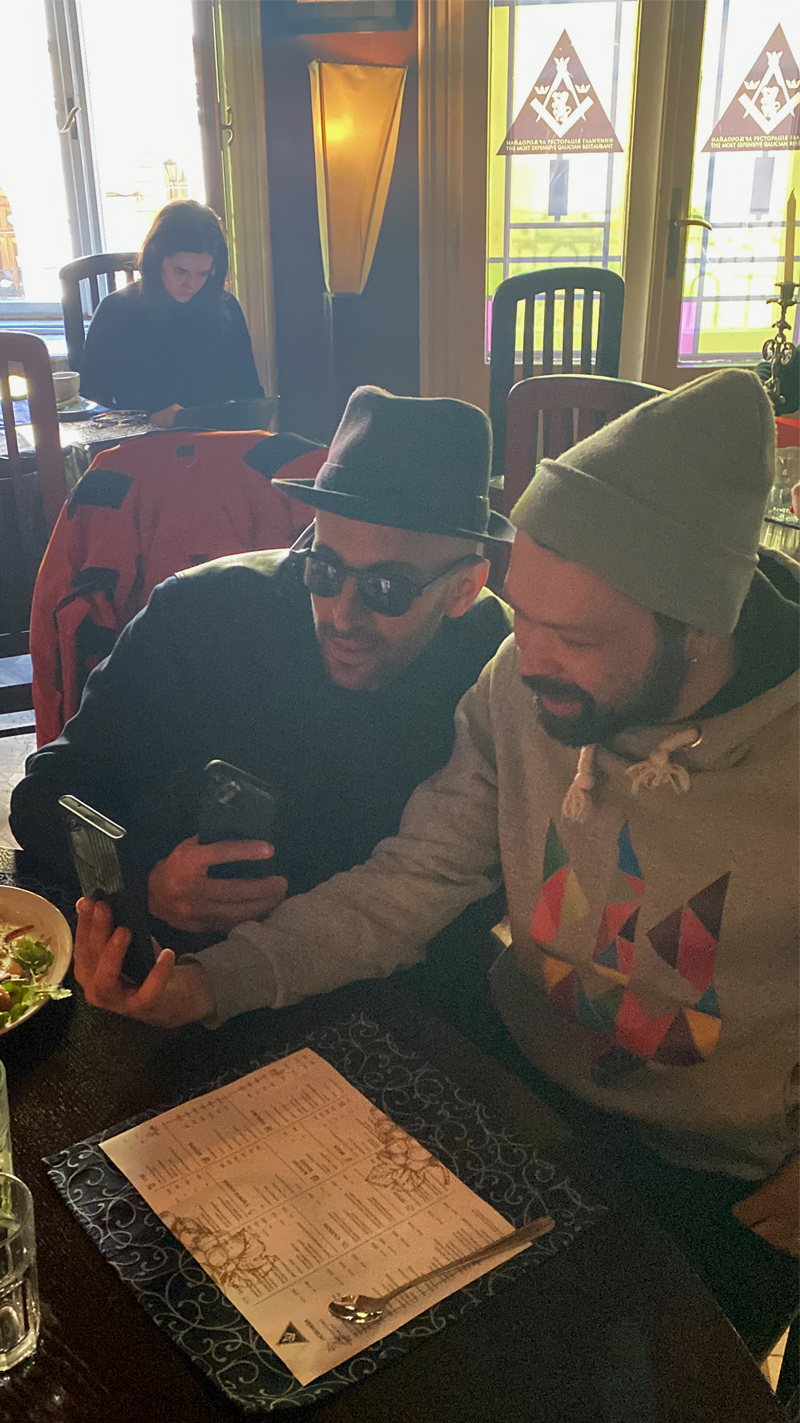
Dmytro Sobol, co-founder of don’t Take Fake (DTF Agency), who accompanied JR to Ukraine, says that, in his opinion, the artist was most interested in the people he met. He was interested in the volunteers holding the canvas, street musicians or just a man in a wheelchair with a flag of Ukraine driving through the city. Another important point is the artist’s desire to realize the project in Ukraine (and not, for example, in Poland), involving local residents.
«JR and his team wanted the city and the buildings to decorate the photo. So there would be a certain identification that this is Lviv and not any city in Europe, — Sobol recalls. — The work has to be striking — then it will be a success and will be able to influence people».
JR might not have come to Lviv the day before the action, because there were two events that could have put an end to the project or delayed it. TIME journalist Brent Anthony Renaud was killed in Irpin, and shelling by russia killed 35 people at the Yavoriv military base on March 13, which is 30 kilometers from Lviv and 25 kilometers from the border. However, this did not scare the French artist’s team, and they carried out what they had planned.
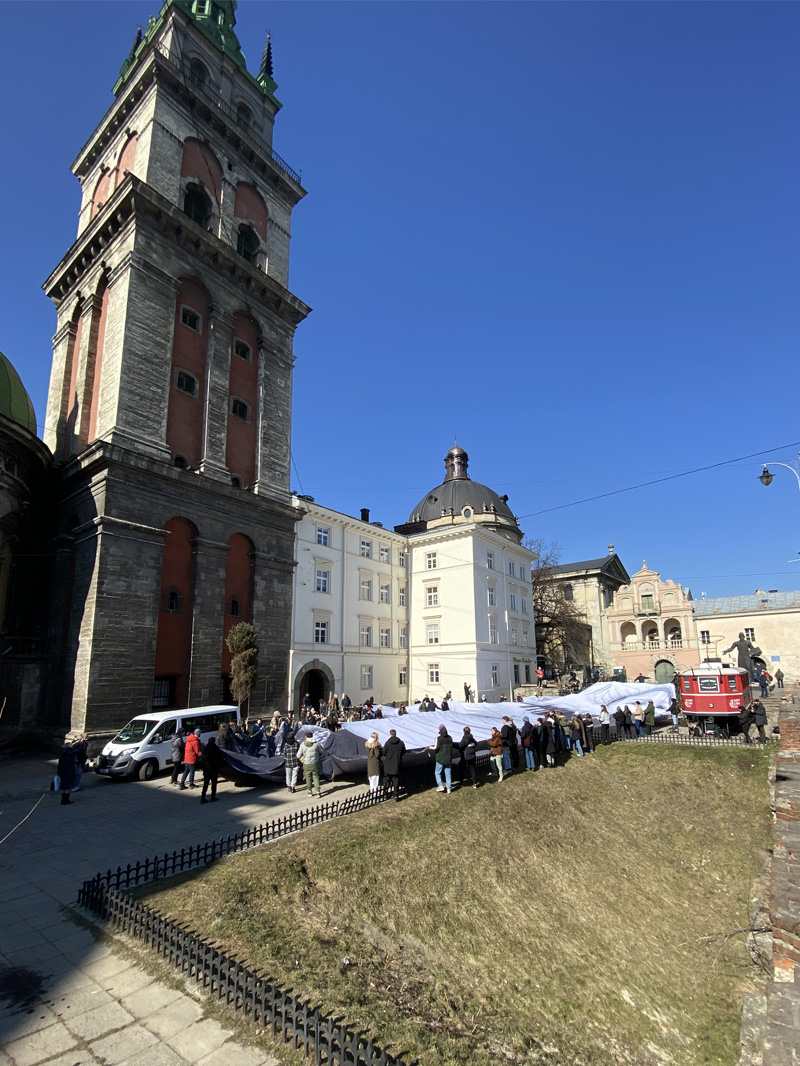
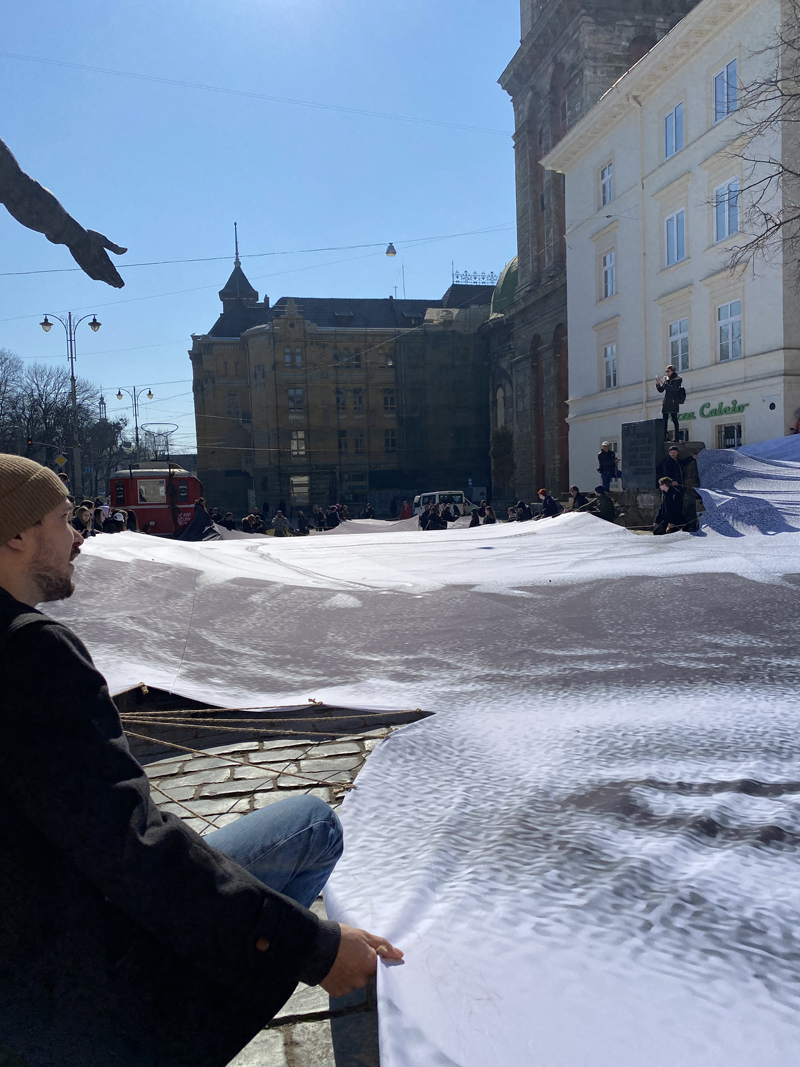
On the way from Lviv to the Polish border, DTF Magazine was able to ask JR why he is interested in the topic of refugees, how the context affects the installation, why the heroes of his projects usually smile, and what he thinks about propaganda.
— Now you’re in Lviv and you’re doing your new project here, continuing to develop the theme of refugees. What makes you come back to this topic every time?
— I think that it’s a topic that is going to be constant to my entire life, like it was to many people before. The question of movement of population, refugees has been in history of humanity and in history of my parents [JR’s mother is from Tunisia and moved to Paris. — Note from DTF Magazine]. Who knows, one day it might be my history.
And it’s a way for me to get closer to people as I travel and realize that they went, or they’re going through the same struggle that families of mine or the people that I’ve met somewhere else in the world. And the question of identity is a very deep question that I keep exploring as an artist.
— Do you remember the moment when you said to yourself: «I have to do a project on refugees from Ukraine»? What prompted you to do it?
— The war exploded 2 weeks ago [the interview was recorded on March 14. — Note from DTF Magazine]. Of course, the idea did not come right away, but of course right away I was trying to see what I can do for Ukraine. The people, artists were writing me by Instagram. I set a conversation and quickly 10 days ago I realized we need to go, and we need to do something. Not really knowing how.
And then the truth with every project — you don’t really know how and what to do. But if you start a conversation, ideas come and people start helping. Today we’ve had tens of people who had come and helped and gave their time and organization to make this happened that 10 days ago I did not have idea I would be doing this project.
— Why did you use an image of the girl and not someone else? How exactly did you find her, and what was it about this photo that caught your eye?
— Quickly when I started seeing the image on television, the thing the children stuck in the middle of the conflict was the most moving. It made me realize you have families and people that are trying to have normal life, and it seems that is the most brutal way to shatter their dream. I wanted to cross this question to the eyes of the little girl.
I contacted a photographer who was at the border, and he tried photographing a few children at the camp in Poland. This was just a little girl actually running and playing. He grabbed that photo by chance, and it ended up the photo we chose. Now her family is safe in Warsaw.

— How important is a sad or positive image, and why are all your characters not in a state of sadness and despair, but rather with a smile and interest?
— The image that Ukrainians have sent is an image of strength and positivity facing this terrible attack from putin’s army. They remained with the most hope I’ve ever seen, and hope is contagious. And I think that my piece of art needed help in this way.
Actually, this little girl was just running and playing. She didn’t really realize what the war was doing to her country.
— How does location affect the context of the work?
— The context of where I install the image is always the most important and also with whom I install it. The fact that there’s no brand, no sponsors, no any kind of financing, but also the fact that it’s local people, volunteers who come, that is the actually main part. The action itself is the art. The image that will travel will convey the message to people around the world who couldn’t join.
— You once said: «What I like less is that before every project I always doubt it». What did you doubt about the Lviv project?
— Until we left yesterday to Lviv we didn’t know if it would be possible to fly a drone in the middle of war or to cross the country with this giant image and all the stuff we brought. Some of our passports from the team were almost expired.
We didn’t know if we would be able to actually make it to Lviv and also they started bombing close to Lviv just yesterday [This is about the bombing of the Yavoriv shooting range on March 13 — Note from DTF Magazine]., so in every project you doubt what if it will happen or not.
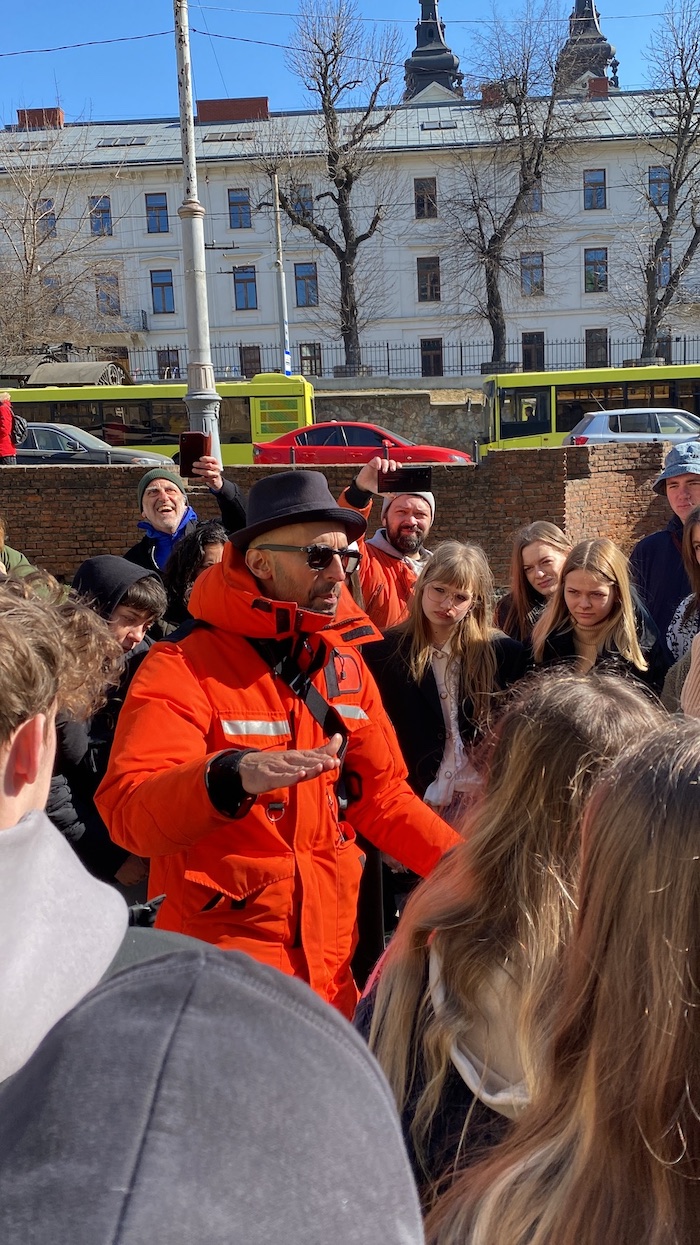
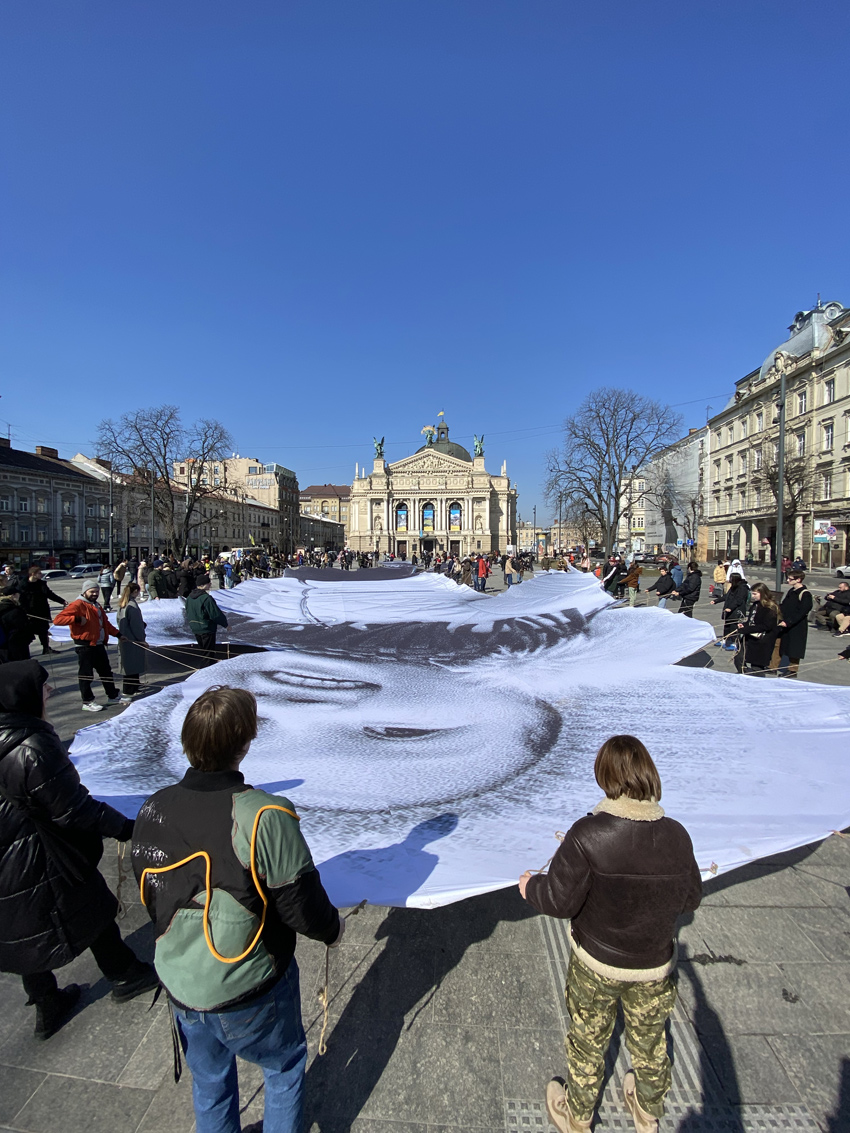
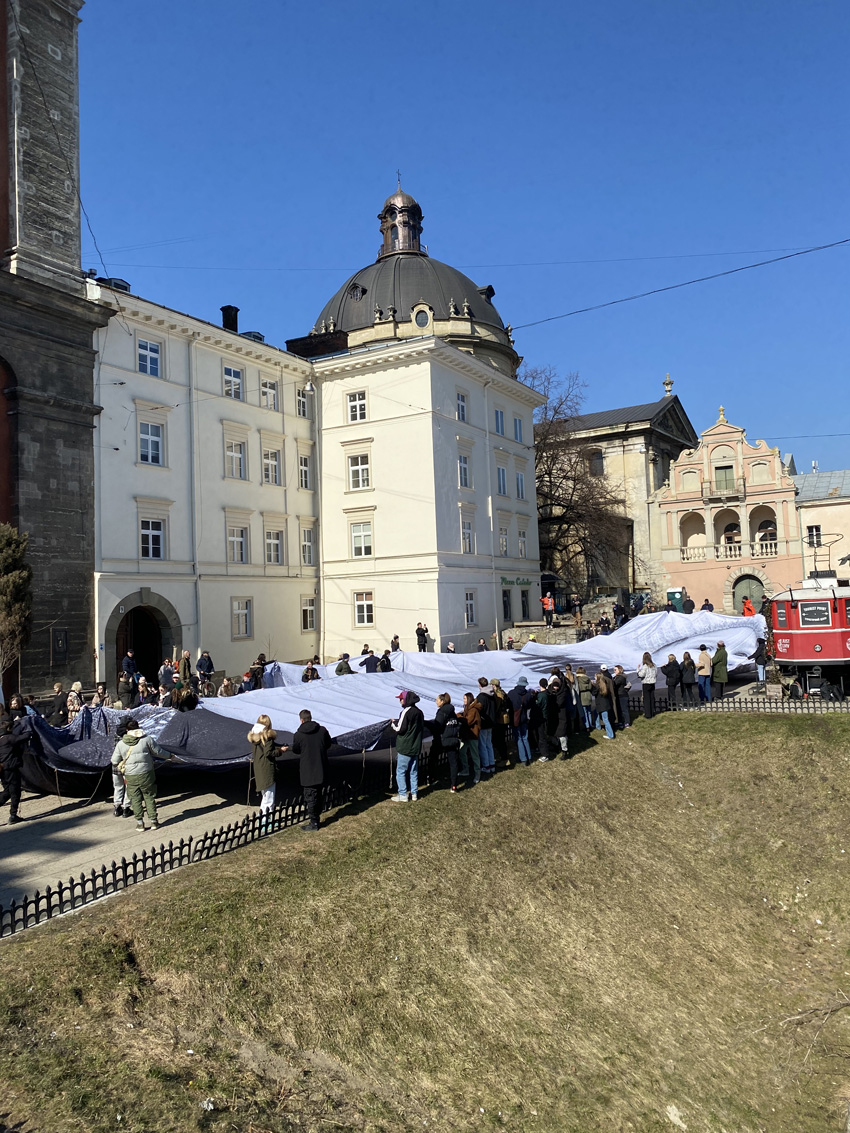
— Do you believe your work will break through the walls of propaganda?
— I think every image is a propaganda in its own way, but it depends on how you conduct your propaganda. As an artist the context in which I create images is the fact that there is no branding, no sponsors, no government involved, it is the propaganda of the people. If it ever ends up propaganda, it’s the people’s propaganda.
If it ever ends up propaganda, it’s the people’s propaganda.
— The refugee crisis has happened in Europe since 2015. You travel a lot and work with displaced people. Do you see a change in people’s perception of refugees over the years?
— I think this will be the endless question of how we perceive the refugee. In most countries everyone comes from somewhere, but after a while they forget about their own story, and they start settling in and anything new becomes a fear.
This is the closest crisis we have in Europe and I hope this will make people realize this is the same situation that the people who were fleeing from Afghanistan or Syria, they were fleeing from the same kind of attacks that Ukraine is having from putin’s army.
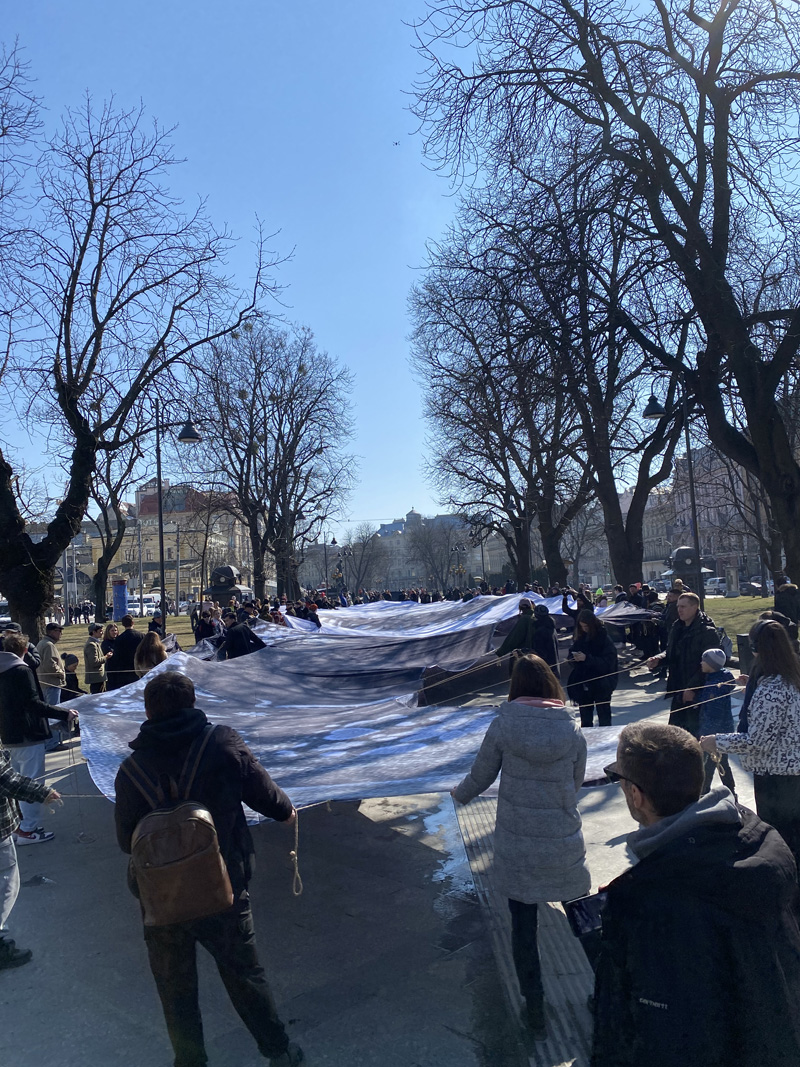

— Many male refugees have remained in Lviv and are not accepted into the Armed Forces of Ukraine. And there is nowhere to return — their homes have been destroyed. Have you encountered a situation where such communities of people united by a common misfortune become a stronger community with self-actualization?
— No, I don’t think I’ve ever come across any situation like that. What I have seen also on top of Ukrainian becoming stronger and more united ever is Europe becoming more united ever. And the world also — a big part of it.
I want to see hope in all these, because I’m an artist and my duty is to remain utopian or totally optimist even in the darkest day.
But this is the strong message president Zelenskiy is sending to the world. Even we don’t know how this will end, we want to believe that Ukraine will win.
